A few high ISO OOC JPEG snaps with the Sony RX1
I was in my office this morning and saw the dog on my office chair. It was very dim in the room so I figured I would test the RX1 in B&W JPEG mode at higher ISO to see if the camera focused correctly and to see how the noise would be with an OOC JPEG in B&W. These are untouched direct from camera JPEG’s and the camera was set to B&W. Focus was spot on and in the 2nd shot the camera chose ISO 6400 in Auto ISO to get to 1/80s. It was that dim in the room though you can not tell it from these photos. That is what a good lens will do..brighten up the scene which in turn, adds dimension and depth to the photo.
Take a look at the snaps below. You can click on the image for a larger 1800 pixel wide version (resized without sharpening) and BTW, Noise reduction was OFF in camera. The grain from the high ISO shots is not offensive at all in the images. The RX1 could easily make for a great B&W street shooter, even at high ISO.
ISO 5000. Click on the image for a larger size to see the detail, even at this ISO and the image being a JPEG. Below the image is the 100% crop.
–
Here is one at ISO 6400 and 1/80s. Focus was quick and locked on (use center point, not spot!) and again, the noise at ISO 6400 in this B&W JPEG is not bad at all!
–
Here we are again but for this one I had more light coming in so it was taken at ISO 1600. I think I will be shooting the RX1 in B&W JPEG mode for a while to see what comes of it. I am digging it for sure.
I always speak the truth of what comes from my experience with the cameras I use. The RX1 is a beauty and like I said in my full review, it just works and it always seems to give me beautiful results, even if the scene is nothing exciting. It inspires one to use it so once again I say THANK YOU to Sony for building this camera. I just have one request for the RX2..built in EVF and $1000 less expensive so more people can enjoy this jewel 🙂
Steve
UPDATE – For those who said the RX1 can not do high ISO with COLOR, there is one image below I snapped in color at ISO 5000. There are also quite a few in part 2 of my full review of the RX1 HERE.
ISO 5000 – OOC JPEG – Click image for larger with 100% crop

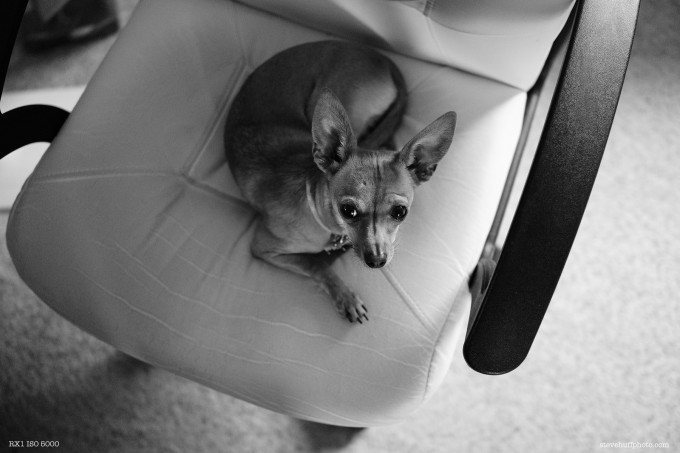
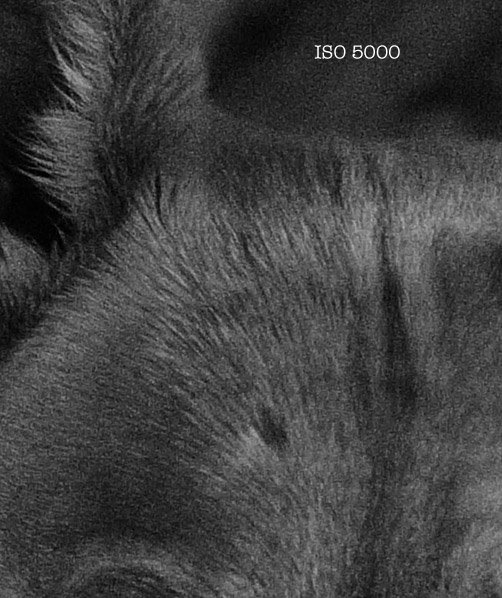
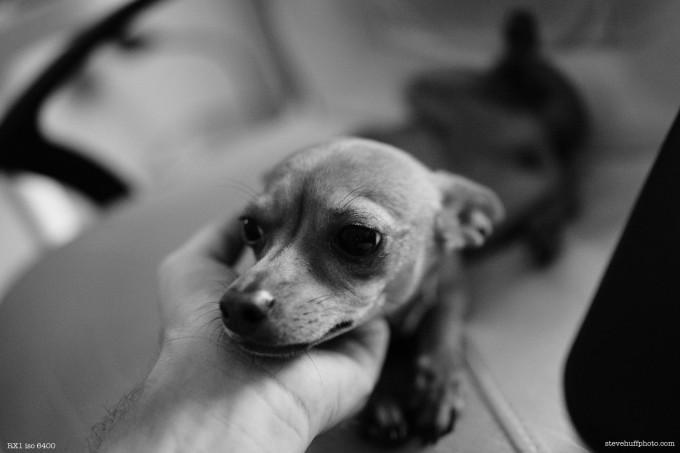
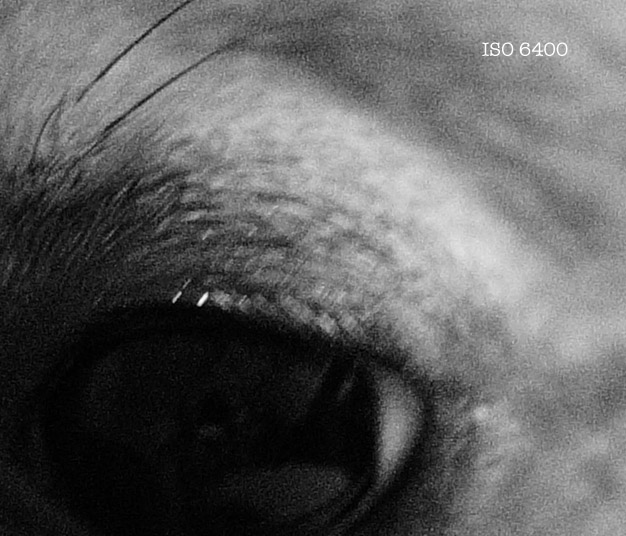
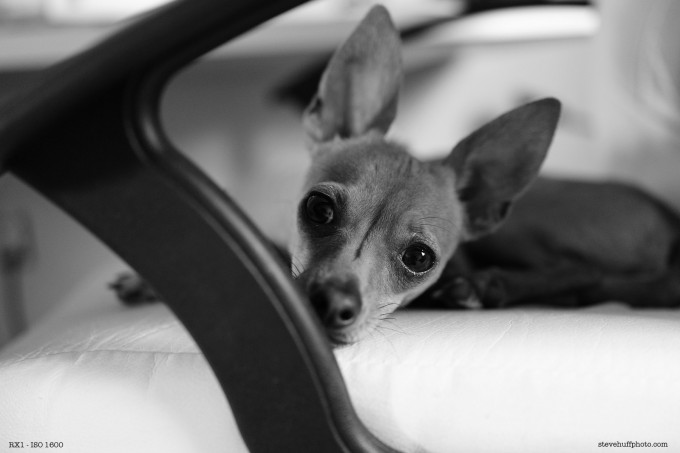
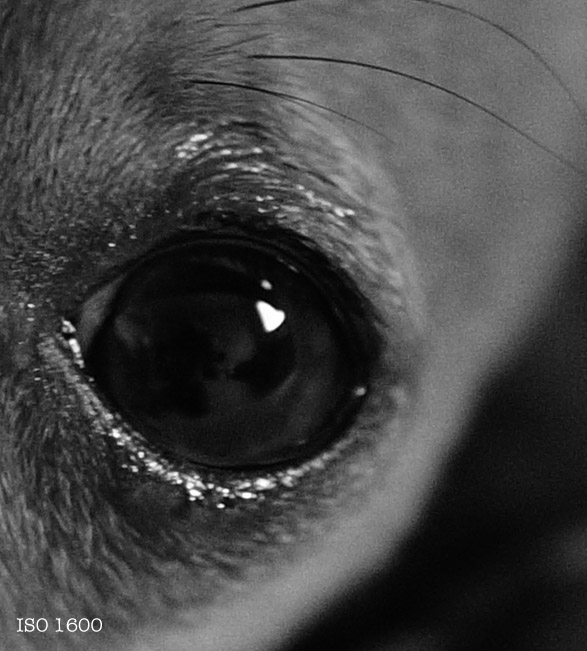
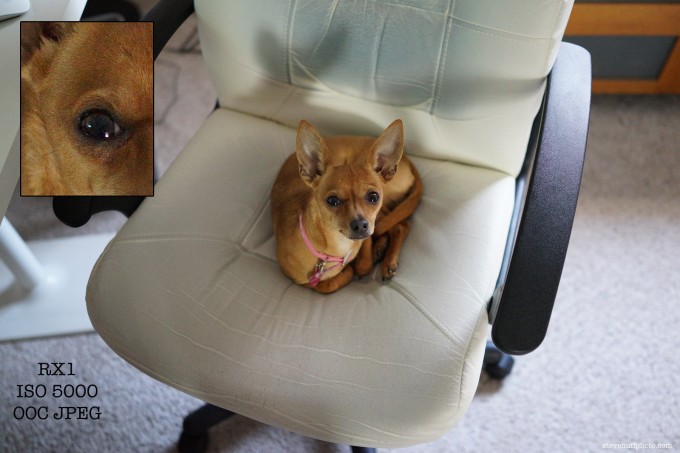


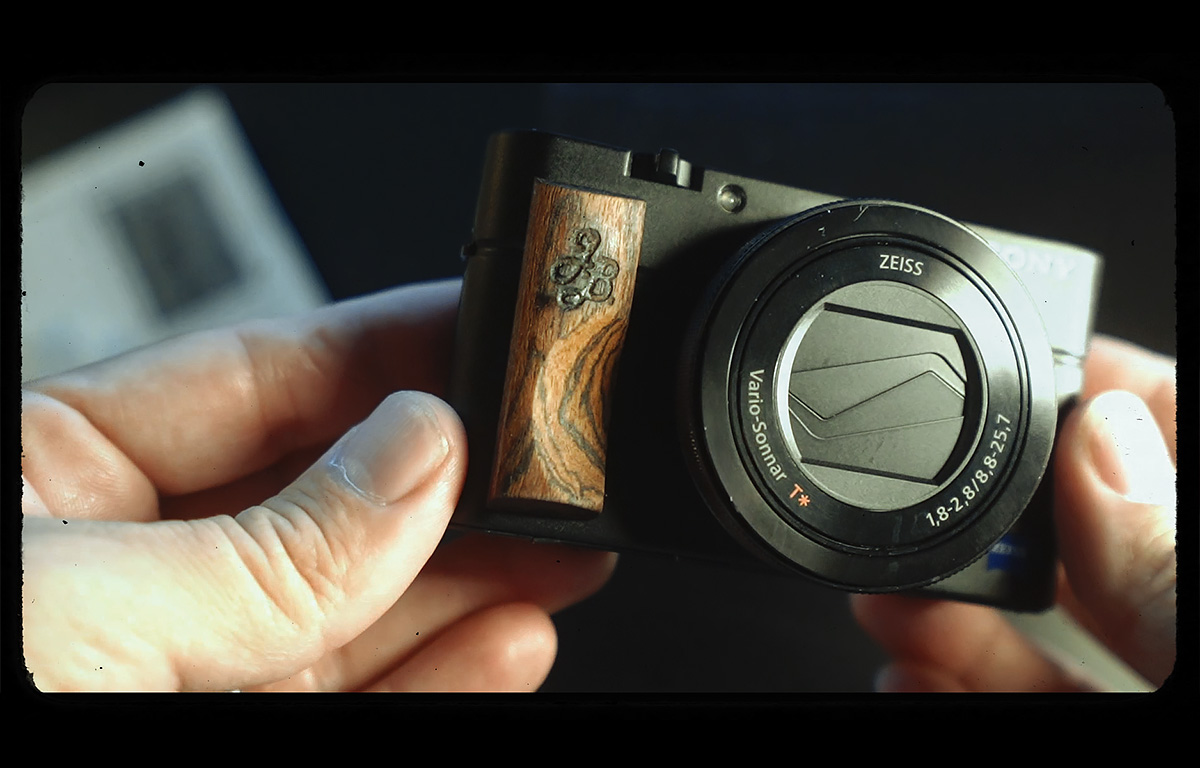
What’s “OOC”?
Well, im glad the focus was spot on with these pics unlike the ones done with the fuji xe1 tests.
Well, that is due to the Fuji and 35 1.4 not focusing well at all. Seems the X-E1, like the X-Pro 1 still lacks in the AF dept…(accuracy). But even when it nails it, at high ISO there is a blurring effect with the Fuji that you do not see with the Sony, but that is to be expected with the superior sensor of the Sony.
Sony has got one strong competence: building excellent sensors. Generations of Nikon bodies enjoyed this excellence (remember the still GREAT color rendering of the Nikon D300(s)?)
Many readers are quite sure that later this year we’ll see a full format NEX, hopefully with a good set of lenses (as, apart from the Zeisses, all current Sony branded lenses are crap), and for sure with a built-in EVF. In this light, I think it’s time to sell the RX1 – it’s just a forebode, that will rapidly and excessively drop in value. My forecast is that the price drop of the RX1 will be even more dramatic than the apocalypse of the Sigma SD14’s price level.
Okay, correct me if I wrong here please, what your saying is; your going to wait for either a FF NEX with a built in viewfinder OR a huge price drop in the RX1? Or both? …before you make a purchase…right?
Sounds reasonable. What are you shooting with now, if you don’t mind me asking?
To nitpick first; I think it was the Sigma SD1 that had the largest price-drop in history 🙂
Secondly, I think you are mistaken in that the FF Nex will replace the Rx1. They will have different markets. It will probably be extremely hard to get a lens/camera combination for the Nex that could best the rx-1, especially at that size (for the lens) or price/combination. Secondly, I find that fixed lens cameras have one advantage that not many people talk about: Far less risk of dust on the sensor. I think there is something to be said for one well integrated device.
I want to own both, honestly. Either a Nex FF or Alpha FFf or special occasions when I can afford some “bulk” (maybe not too bad in the case of the Nex), as well as a Rx1 for having in my jacket pocket at all times..
thanks for your reply steve. you make some valid points. so fast iso and very fast af gives you great landscapes i see ps sigma sony. keep up the great work
steve can you please tell me if i have just woken up from a long sleep from the 70s !!! what is this obsession with cameras used at very high i s o 5000_6000 what for? they look dreadful and not sharp at all
also the how fast does your camera focus mate brigade. is the world full of idiots who only take photos of the 100 meters run in the DARK. HENRI CARTIER BRESSON must be turning in his grave. some of the most iconic images of the last 100 years prove you only need a good eye to take a great photo not 6000 iso . ps sigma dp2 v sony rx1 100 iso !!!
Hey Peter, no, It is now 2013 and we live in a time when cameras come out every few months with new and improved features and readers come to this site and many others to see the capabilities of these cameras. High ISO was not used back then because it was not possible to do so. Sure you could shoot and even push ISO 3200 but you would have so much grain it would be tough to even look at sometimes. Sure, ISO 3200 film could and can be beautiful but in todays world we have surpassed that and like it or not, many images shot today surpass those of the past greats.
Why is this? Well, 1st of all there are SO MANY MORE of us who go out and shoot, many just for fun and many times there are works of art created today, in 2013 by everyday folks who use the latest gear to do so. DO we NEED ISO 6400 and up? No, of course not but since this very website is a GEAR review site at its core I test features of these new cameras. Believe it or not, many of us DO INDEED use ISO 6400, 12,800, including me (with the RX1) as it allows me to do things I previously never could, which opens up new opportunities.
I understand the old timers and purists who think a roll of film and an old beat camera is all you need, as this is true if you just want to walk the streets in daylight or with a flash gun and fire away. But if you want to dive into the depths and be different..try NEW things because we now can then there is nothing at all wrong with it.
Again, I review and write about cameras, lenses, etc. I have been doing this for over 4 years here and will keep doing so. When a camera is released with clean ISO 100,000 I will write about it, not because it is needed but because it is possible and can open new possibilities for many of us who are not in the “purist” mindset. It’s a new day, it is no longer the 50’s.
Oh and other reasons to test high ISO? Another reason high ISO is good to look at is because sometimes a photo with some grain can look better than being 100% smooth. Not all people who read this site and take photos even know who Bresson is and they do not care. Not everyone is into street and many use these cameras to take photos of their kids birthday parties, indoor family events..many situations where a camera with good high ISO performance can make the difference between a good photo and one that is hard to look at. High ISO with quality is a good thing and can never ever be a bad thing and you speak of these high ISO samples looking “dreadful” – that is funny as they surpass almost every camera made today at these ISO’s (next to the Nikon big guns) and equal ISO 1600 film IMO. As for sharpness, you speak of Bresson…most of his images were not even as sharp as these (which you called “not sharp at all”). Critical sharpness is not needed for street photos, we all know that. But to some, it is needed very much when someone wants to extract as much detail as possible, such as in a landscape.
As for your Sigma DP2 vs RX1…not sure what you were asking but the Sigma is a one trick pony. You can not shoot anything moving with it, and it’s max usable ISO is really BASE ISO if you want to take advantage of what it offers. To me that is much to limiting to own as an only camera. With the DP2 you will get more detail. With the RX1 you will get everything else – depth, still plenty of detail, DOF control, speed, build, better battery life, ability to use in low light or night situations, ability to shoot more than just static objects, etc.
Thanks for reading
Steve
He might just have a really crappy monitor.
+1
Good response, Steve. I hope I can get to the point where I could afford the Rx1 as my walk-around camera – and as you pointed out, most of us want to take good pictures at birthday parties, indoor zoo’s, piano recitals etc, some of which may have poor lighting conditions.
I am very impressed by the pictures you have taken with this camera – and I definitely see a FF Sony “pocket” cam in my future at some point.
“HENRI CARTIER BRESSON must be turning in his grave”
it just could be the case…….because he can’t get to try what is going on with technology today….!
If I see an image and it moves me…I don’t then ask…”what was the iso on that by the way?”and then not like it! I don’t even consider the aperture or shutter speed equally.
“The creative act lasts but a brief moment, a lightning instant of give-and-take, just long enough for you to level the camera and to trap the fleeting prey in your little box.”
– Henri Cartier-Bresson
I think he would have embraced the RX-1 and modern tecnology.
You could well be right but I’m pretty sure he wouldn’t have chosen this camera.His philosophy tied in pretty much with leicas in having a proper viewfinder and space around the frame to see what might be about to happen.This camera does not offer either of these,the lack of which cannot be considered in any way an advantage.
I’m sure he’d have been as tired as most of us at having this camera described as “leica like”.Its not.
Nice photos Steve, and always happy to see your reviews and honest opinion. Cute dog too. What’s her name? I just upgrade from 5N to 6 and couldn’t be happier. The little ergonomic improvements and added functional buttons and built in EVF help a lot. Will post my equipment in your buy/sell page.
Thank you Steve for reviewing this camera so emotionally. I bought this camera because of your reviews and ….. I could not be happier. This is the best purchase in a long time and this camera is now really changing my photographic live. Perfect! I just wish there would be a more complete User Guide of the camera. The one in the box is quite reduced.
Glad you enjoy it and I agree, the manual is lackluster but the best way to get to know the camera is to just dig in and experiment with everything. Hands on is the best learning there is.
What I am amazed it is the difference between these results and the NEX system. This camera doesn’t surprise me. Given that it’s a fixed lens, it’s a bit easier concept to make something (from an engineering standpoint), that give these amazing results in the small package. I wonder however why the disparity between the overall results and those of the nex system. I hope, rather than try to use this FF size sensor and tiny body as the basis for a new NEX system, that they try and take the positives from this sensor and lens, and go to work on improving the NEX aps-c cameras. I think that the knowlege gained here can benefit the aps-c sensors so that the package can remain small, and that a whole series of lenses and cameras are not tossed away. The APS-c size has many great attributes, including the ability to keep the lenses smaller than FF (generally). I hope the refinement will continue to improving on what’s out there.
The phrase “Game Changer” gets way overused IMHO. Such is not the case of the RX1 for it not only changes the game, but the entire season.
That’s the reason for the disparity you mention.
I don’t use that expression, because every game is always evolving. These are evolutions. My hope is just that these companies continue experimenting, but with the goal of evolving what exists. I don’t have the NEX, but think that the form factor and size make sense – as does the aps-c size sensor. I just would hope that that system will continue to be refined to use what’s learned from these experimental products.
Excellent hi iso, however all hi iso shots I see are B&W to cover up the poor lack of colour etc, never seen an iso 1600 from a Leica M9 in colour look any good either.
Most wedding photos in poor light are in B&W as it is the only method to cover up crappy noise.
Very nice camera though.
Might be true – but I don’t remember high ISO color FILM having such an amazing look either. Still, for what it is, the colors do look pretty good out of this camera.
I have posted plenty of color high ISO shots in my review of this camera, mostly in part 2. They look damn good to me.
As I posted above there were many high ISO color shots in my review but I just added one here at ISO 5000. Enjoy.
Adorable lil caramel colored biscuit 😉
Thanks Steve, I like to see hi iso colour as it truly shows the cameras ability. Cute dog, nice camera.
Steve, are these shots true OOC? No post-work at all?
Yes. Camera was set to the B&W setting, camera was on JPEG only, bumped up contrast in camera to +1 and that was it. No PP.
inutile de faire de la pub pour un boitier a 3,000$!!!!!!
Hi Steve
Any news at all re further grips, etc in the third party for this camera? Perhaps improve the ergnomics of it if is something some users may be looking for.
Thanks
Andy
I have not seen any yet, but cant be too far away.
Please tell me,
where is the point in doing a High ISO Comparison in quite normal daylight situation? I mean you wouldn’t do a high ISO shot under normal circumstances so this snaps seem to me to have no validity.
I am eager to learn. So please tell me where is the point in doing so?
WOW!! super clean 1600 ISO in better light!! Lots of DOF if you really needed it at this ISO. This shot really shows how the Sony performs at a higher ISO in better light…:)
GH
The original post sates it was quite dim in the room. Also, a correct exposure with ISO 6400 and 1/80s, in a normal lit room that would be what? f11? Looking at the DOF I’d say these were wide open, so they cannot possibly be in a normal lit room.
f2, 1/80s, ISO6400, it had to be pretty damn dark…
Hello Knipser,
ISO 6400 1/80s f2 doesnt sound like a “normal daylight situation” to me.
Best Regards,
Wayne
No it was not. This was in my office, blinds were closed and no light were on. It was very dim. The camera needed 6400 and 1/80’s to get this shot which tells you how low the light was.
Steve any word about new Sony or third party grips coming out for this camera?
Had one on order found it too small re ergonomics.
Very nice though and watching closely how this space develops now Sony are leading the FF market for small mirror less cameras (beyond Leica of course, though this is a RF niche in some respects).
No word that I have heard. The thumb grip works amazingly well, but you can not use the EVF with it – which defeats the whole purpose. I actually love the RX1 feel. Just right for me, M9 like but thinner and not far off from something like an M6. But then again, I was never into grips anyway.
Steve, Thanks for posting more OOC JPEGs. These are useful in helping me decide whether to buy, as sharp, true-to-life JPEGs are what I must shoot at work. It is easier to justify an expensive camera if it can do double-duty, on and off the clock.
This camera is exciting!….and I love the request to Sony for the RX2…so the RX3 can be all of that and have an assortment of interchangeable, fast Zeiss primes!!!
Having read the previous post by Moses Olmos, I think I might just stick to my Nikon for a little while 🙂
Same thought here. Just have to perfect my b&w technique on my D700. I’ll be trying out my “old” Nikkors, Ai and AiS, on it as well.
Michiel, I agree !
It seems you have posted mostly black and white with the RX1. Do you have any reservations about Sony color with the RX1?
No, none whatsoever.
The “usability” of a camera is as important as the image quality. So… I hear you, Steve.
These images make me take notice of the B&W possibilities of the RX1.
Keep up the great work,
Peter.
People woggle on about how this camera or that produces a film type grain / noise. My X100 doesn’t – it is clean and fine grained – but digital. This is the first time I can see it.
I love how much you love this camera!
this camera is awesome!! gets good shots in any light!
Thank you for the post. I own the camera too and I am absolutely knocked out by the perfect quality/sharpness. Two things Sony needs to change in my view. 1) Allow to choose min. speed for auto iso (so I can go higher than 1/80) und 2) activate focus when pressing AFL in DMF mode and allow manual refinement (I just does not make sense to activate focus with the shutter) — I live the behaviour of Fuji X100 MF. And number three (nice to have) is to choose focus mode with FN in Auto Mode. Cheers, Juerg
That just looks very, very good at that ISO level, and so does the in-camera b&w conversion.
Beautiful photos, Steve! Wow, the rendering of the B&W in JPEG mode with the Sony RX1, to my eyes at least, is far more convincing than the Leica M Monochrome. The Leica’s files (in RAW), though detailed, look grey and washed out whereas the RX1 files look rich across the entire light spectrum. Did you do any post processing to these files?
I couln’t agree less;o) and its a good thing btw this gray/’washed out’ look you mention – at least for later post-work… and the Monochrom noise is also less ‘digital looking’ than the noise coming from the RX1 here…. (to be fair i have only looked at online jpg/raws and not handled the RX1 myself but have obviously downloaded other peoples images to check big sizes). Offcourse if you want to use the images SOOC then its nice with rich JPGs. But the background rendering is indeed very nice – real Sonnar on Sony-like;o)
OOC Jpeg snapshots. No post processing therefore I think. That’s why I was impressed.
Yes, 100% OOC JPEGS
Qed
Steve, I could not agree more…an amazing little camera.
Looks pretty good. The camera seems very capable! Great stuff, Steve!
Love the way it looks like a love heart reflection in her eye in the last image.
She only has eyes for you, Steve. ; )
LISTEN
If we look at the printed photo with a LOUPE
we will NOT see amount of digital noise that digital magnification adds.
Digitally magnifyng any image always adds digital niose.
Look through a LOUPE of the print to see how noise free the image really is.
I’m not convinced. The images are certainly usable, but I prefer the look of the much larger Sony micro 4/3 16mp sensor found in the Olympus EM-5. The same sensor is now used in the new E-PL5 and the even smaller and lighter E-PM2. It’s almost pocketable I think. Especially with the Panasonic 14mm f/2.5 or the Panasonic 20mm f/1.7. The price is almost the same and I feel you get a lot more small camera for your money.
What are you talking about Snappy? MFT sensors are far SMALLER than FF. They are in fact smaller than APS-C as well (which most dslr’s and some mirrorless like Nex use)
FF (Full Frame) 36mm x 24mm: Nikon D800, Canon 5D MK3, SONY A99, SONY RX-1
APS-C 23.6mm x 15.7mm: Nikon D5100, Canon t4i, SONY A77, Nex- range cameras (Canon sensors are actually a tiny bit smaller)
Four Thirds: 17.3mm x 13mm